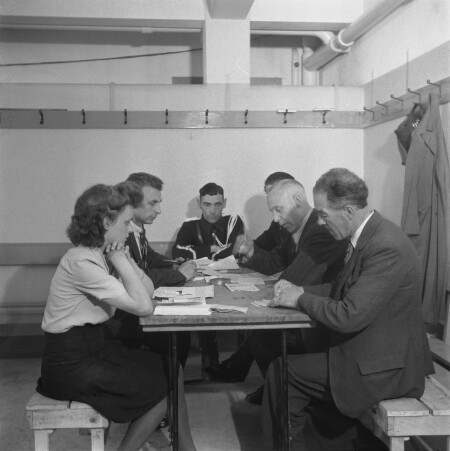Report: focus on customer journeys for target audiences
- Record
At meemoo, we’re currently building a new, comprehensive platform to eventually replace our other user platforms. This will help us reach wider audiences, including local historians and scientific researchers. In the spring of 2021, we put our heads together with content partners to identify the needs and wishes of these two target audiences. Read about our work and the tools we offer in this report.
With supervision from external consultant Stefan Jenart, we organised two workshops on 30 April and 7 May 2021 in which representatives from our content partners talked about their experiences with the two target audiences. Together, we considered the steps they go through in their research and what questions they ask themselves. We also invited participants to come back for a follow-up day to reflect on potential opportunities.
In good company
The workshop for scientific researchers (and students), enjoyed input from Ann Coenen (VRT), Patricia Quaghebeur (Kadoc Documentation and Research Centre on Religion, Culture and Society), Kim Robensyn (Amsab Institute for Social History), Hendrik Defoort (Ghent University Library), Shari Platteeuw (CO7) and Ingrid De Pourq (KMSKA Royal Museum of Fine Arts Antwerp). In the workshop for local historians, we put our heads together with Thomas Eyskens (VRT), Tijs Goethals (SA Poperinge), Sofie De Veirman (Land van Dendermonde), Ellen Ryckx (Huis van Alijn) and Hilde Van Parys (Bruges Public Library).

Afbeelding: Een groep mensen, waaronder een vrouw en een marechaussee rond een tafel in een kleedkamer bekijken papieren, 1945, Anefo, CC0
The results
The workshops resulted in customer journeys for each target audience: a visual representation of their requirements over time. These charts serve as ready-made tools for anyone working in the world of archives.
How to read the customer journey chart
At the top of the chart you will see the timeline that scientific researchers or local historians travel along;
The various phases of the timeline are visualised in a handy storyboard below;
Beneath the storyboard, you can see a detailed list of the steps that the scientific researcher or local historian undertakes;
Finally, the questions they might ask are noted.
How to get started
If your work involves local historians or scientific researchers, you can use the customer journeys as a guide. They can help with communications, optimising your processes and developing new services. You can update them yourself as working documents.
This is how to get started:
Think about how you can meet your target audience in each stage they go through;
Then add as many rows as you want at the bottom of the grid. For example, you might want to add a row for the channels of communication that your target audience uses in each step. Or add your comments or tips for improving your own service in each section.
What we learned
Two weeks after the workshops, we welcomed the participants back for an exercise to reflect on opportunities. The insights we gained are relevant for our new platform, and also for the wider sector. We’re happy to share them with you here.
This exercise showed that scientific researchers and students attach great importance to:
supervision of their research;
sharing source materials;
disseminating their research.
Local historians consider the following points for attention very important in a new platform:
positioning relative to existing (local) initiatives;
easy platform accessibility;
access to source materials;
the price.
Make sure you anticipate these issues when involving these target audiences in your work!
In the autumn of 2021, we also ran a workshop to look at the customer journey for users working in the creative industry. We will publish a report on this soon.
